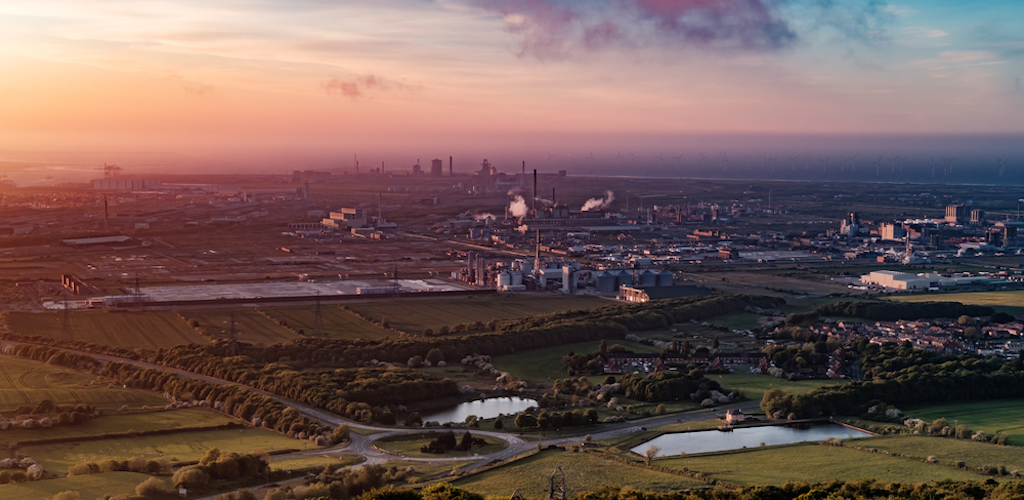Apr 30 | 2021
(Europe) BP Plans UK’s Largest Blue Hydrogen Plant

With BP’s announcement that it plans to develop a blue hydrogen plant, the largest in the UK, the outlook for breakbulk activity in the sector is forecast to grow.
The proposed H2Teesside project announced by BP is forecast to produce 1 gigawatt of hydrogen by 2030, marking "a significant step" in the firm’s hydrogen business.
“There is huge forecast demand for hydrogen – National Grid ESO’s Future Energy Scenarios 2020 sees demand in scenarios that reach net zero as 150-590TWh, which could require something in the order of 20-100GW of production capacity,” Tom Andrews, senior consulting analyst at Cornwall Insight, told Breakbulk.
FID in 2024
Located in Teesside in the north of England, the plant is targeting a final investment decision in early 2024, driving significant breakbulk demand as construction ramps up.
“H2Teesside, together with NZT and NEP, has the potential to transform the area into one of the first carbon-neutral clusters in the UK, supporting thousands of jobs and enabling the UK’s 10-point Plan,” said Dev Sanyal, BP’s executive vice president of gas and low carbon energy.
The firm has already commenced feasibility studies, and predicts that hydrogen production at the site could begin in 2027 or earlier. Demand for breakbulk handling in the region is also expected to be boosted by the Net Zero Teeside and Northern Endurance CCUS projects, which will potentially share assets. The UK government is set to publish its Hydrogen Strategy imminently, providing more outlook on a future roadmap for both CCUS and electrolyser technology.
“We wouldn’t like to pick winners at this point, but we will note that Europe is betting heavily on electrolysers, particularly on the North Sea coast of Germany and the Netherlands, and in North Africa connected by existing gas transmission pipelines to Italy. Chile is also looking at the same. Saudi Arabia and Australia are taking a more mixed approach to both technologies,” said Andrews at Cornwall Insight.
Global Push
The plant is part of a global push that is expected to see hydrogen emerge as a vital part of energy systems across the world, extending existing logistics capabilities for carriers.
“Hydrogen is quickly elevating as the prime candidate for replacing carbon-based fuels, and governments are pouring tremendous amounts of money into this alternative to allow the markets to commercialize the sector. As a result, we are now seeing a number of projects, increasingly growing in size, reaching investment decisions and going into detailed engineering and construction phases. In this regard, we have just received a major order to ship modules for a hydrogen plant in Europe,” said Karen Clarke, account manager at forwarding group deugro.
Marko Stampehl, global head of marketing at breakbulk carrier BBC Chartering likewise sees demand growth, building on traditional segments, “BBC Chartering has been carrying components for the hydrogen production for many years, e.g. (but not exclusively) for ammonia production plants. While hydrogen is currently being pushed as a “green” fuel (when it’s produced with renewable energy), components needed for its production are no new or unusual parts for us as carrier.
“Looking at China, plant components for hydrogen do not play a bigger role at major manufacturers yet. Most workshops are still occupied with plants for traditional chemicals and most of the capacity in the coming years is dedicated to LNG. Looking at hydrogen projects, timeline for completion is mostly projected towards the end of the decade and beyond.”
Andrews of Cornwall Insight, forecasts at least four other projects at this scale may be commissioned in the UK by 2030, predicitng a couple of other large blue hydrogen projects, such as existing steam methane reformation technology with added CCUS, along with several projects looking at green hydrogen.
“Globally, we’re seeing projects with similar timelines for around 1.2 million tonnes/year costing in the region of $5 billion or £3.6 billion. That’s in places like Saudi Arabia and Australia, where development is probably cheaper. Still, they’re taking the (currently) more expensive route for green hydrogen from electrolysers, so it’s perhaps comparable. So if we talked about an investment of £250 million to £1 billion in this project, that would probably be the right ball-park. Looking at it another way, forecasts for blue hydrogen capex are £650-1,250/kW, which would give a cost range of £65 million to £1.25 billion,” Andrews said.
Challenges Ahead
Despite bp’s extensive financial resources, the H2Teesside project and other similar hydrogen projects are nonetheless expected to face some challenges.
“In our view, there are two chief challenges for the project. First is technology – carbon capture, use and storage (CCUS) at scale is as-yet unproven, only ongoing at the trial stage. The second is economics – it is going to be much more expensive to add CCUS to hydrogen production, which will increase the cost of the output hydrogen, which has to compete with existing grey hydrogen production,” said Andrews of Cornwall Insight.
“There is also not yet a certification standard for green hydrogen, like for green electricity. The development of a market for green certificates may support projects like this, allowing the colour of hydrogen to be tracked and the additional value of this reflected and passed through to producers. Europe’s CertifHy project is one approach to this.”
Stampehl of BBC foresees issues with integration, noting “We think that challenges related to hydrogen plant projects lie more in the integration of renewable energy in the production of hydrogen than in the transportation of plant components as such. Once these projects come into their realization phases, we will be happy to further contribute to the proliferation of green energy with our experience. Time being we think it is too early for an educated guess on the demand for transportation related to these projects.”
Subscribe to BreakbulkONE and receive more industry stories and updates around impact of COVID-19.


